The Alveolar Gas Equation
This is the seventh video in our Pulmonary and Ventilator Mechanics Chalk Talk Series, where our goals are to learn how a ventilator works, and how to work a ventilator. In this talk, we explore the etiology of hypoventilation and hypoxemia mathematically. First, we derive the inverse proportionality relationship between alveolar carbon dioxide partial pressure and alveolar ventilation. Next, we derive the alveolar gas equation. Finally, we use the alveolar gas equation to explain two causes of hypoxemia: hypoventilation and insufficient inspired oxygen.
Alveolar Carbon Dioxide
To derive the relationship between alveolar carbon dioxide and alveolar ventilation, we start with a single-alveolus lung model in a steady state system. That means that all of the carbon dioxide produced by end organs is transferred to venous blood, diffuses from the venous blood to the alveolus, and proceeds to be exhaled.
Mathematically, this means that the exhaled carbon dioxide in a minute -- the product of alveolar minute ventilation and alveolar carbon dioxide gas fraction -- is equal to the minute metabolic production of carbon dioxide. Some algebraic rearrangement reveals that the alveolar carbon dioxide partial pressure is inversely proportional to alveolar minute ventilation.
Alveolar Gas Equation
By taking a parallel approach with oxygen, we can derive the alveolar gas equation. Oxygen enters the alveolus via inspiration of breathing gas, and leaves the alveolus both via diffusion into blood for use by end organs and via expiration. The key step of this derivation is recognizing that the respiratory quotient R relates consumption of oxygen with production of carbon dioxide.
The alveolar gas equation tells us that the alveolar partial pressure of oxygen is equal to the inspired oxygen pressure minus the alveolar partial pressure of carbon dioxide divided by the respiratory quotient.
Causes of Hypoxemia
The alveolar gas equation alone explains two causes of hypoxemia in a completely healthy lung: hypoventilation and insufficient inspired oxygen.
Hypoventilation, for example after a narcotic overdose, causes decreased alveolar oxygen partial pressure -- and therefore decreased arterial oxygen tension. This is one of the reasons to get patients off of supplemental oxygen: on room air, the pulse oximeter acts as a reliable detector of hypercarbia. Due to the alveolar gas equation, this sensitivity disappears on supplemental oxygen.
Insufficient inspired oxygen is the other cause of hypoxemia in a healthy lung. Usually the purview of mountain climbers and aviators (decreased barometric pressure) as well as scuba diving and respirator mishaps (decreased inspired oxygen fraction), this is also easily corrected by employing supplemental oxygen.
In the next lecture, we'll examine the causes of hypoxemia that rely on a mismatch between alveolar and arterial oxygenation, more formally called an "alveolar-arterial gradient." Those are insufficient diffusion, ventilation-perfusion mismatch, and shunt.
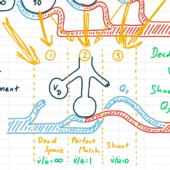
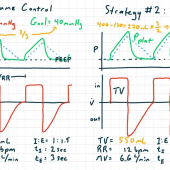
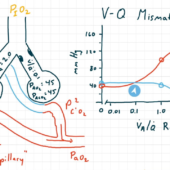
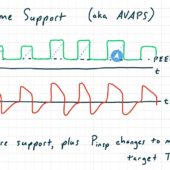
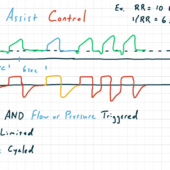
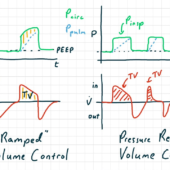
Comments
This post currently has no responses.